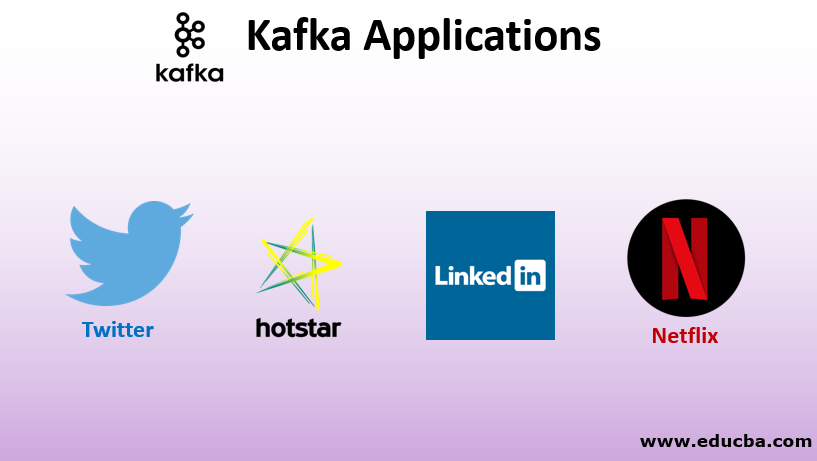
Overview of Kafka Applications
One of the trending fields in the IT industry is Big Data. The company deals with a large amount of customer data and derives useful insights that help their business and provide customers with better service. One of the challenges is handling and transferring these large volumes of data from one end to another for analysis or processing; this is where Kafka (a reliable messaging system) comes into play, which helps in the collection and transportation of a huge volume of data in real-time. Kafka is designed for distributed high throughput systems and is a good fit for large-scale message processing applications. Kafka supports many of today’s best commercial and industrial applications. There is a demand for Kafka professionals having strong skills and practical knowledge.

This article will learn about Kafka, its features, use cases, and understand some notable applications where it is used.
What is Kafka?
Apache Kafka was developed at LinkedIn and later became an open-source Apache project. Apache Kafka is a fast, fault-tolerant, scalable and distributed messaging system that enables the communication between two entities, i.e. between producers (generator of the message) and consumers (receiver of the message) using message-based topics and provides a platform for managing all the real-time data feeds.
The features that make Apache Kafka better than other messaging systems and applicable to real-time systems are its high availability, immediate, automatic recovery from node failures and supports low latency message delivery. Apache Kafka’s features help integrate it with large scale data systems and make it an ideal component for communication.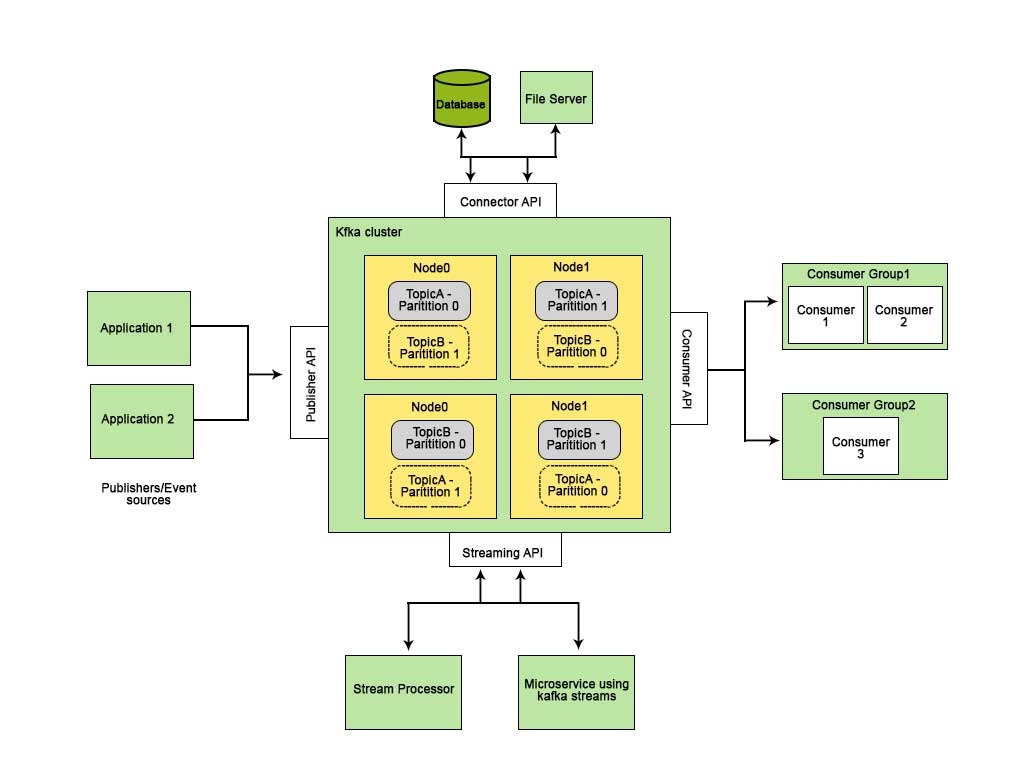
Top Kafka Applications
This section of the article will see some popular and widely implemented use cases and see some real-life implementation of Kafka.
Real-Life Applications
1. Twitter: Stream Processing Activity
Twitter is a social networking platform that uses Storm-Kafka (an open-source stream processing tool) as a part of its stream processing infrastructure. In turn, input data(tweets) are consumed for aggregation, transformations, and enrichment for further consumption or follow-up processing activities.
2. LinkedIn: Stream Processing & Metrics
LinkedIn uses Kafka for streaming data and operational metrics activity. LinkedIn uses Kafka for its additional features, such as Newsfeed, for consuming messages and performing analysis on the data received.
3. Netflix: Real-time Monitoring & Stream Processing
Netflix has its own ingestion framework that dumps input data in AWS S3 and uses Hadoop to run analytics of video streams, UI activities, events to enhance the user experience, and Kafka for real-time data ingestion via APIs.
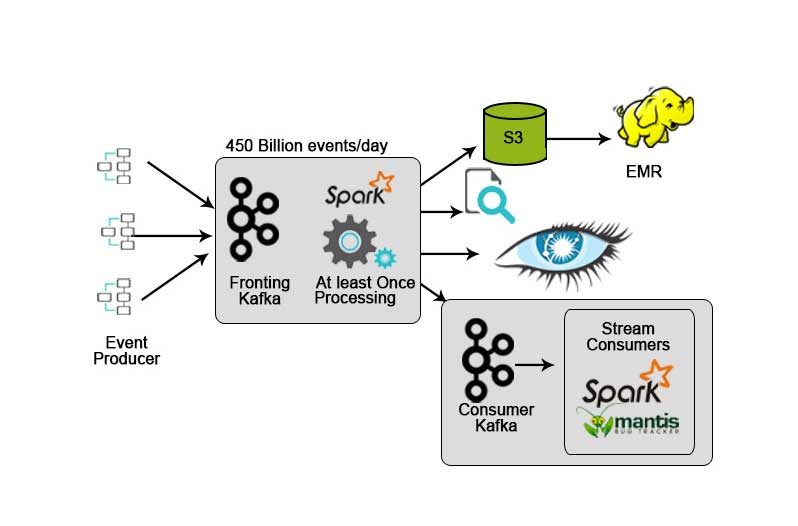
4. Hotstar: Stream Processing
Hotstar introduced its own data management platform- Bifrost, where Kafka is used for data streaming, monitoring, and target tracking. Because of its scalability, availability, and low-latency capabilities, Kafka was ideal for handling the data that the Hotstar platform generates daily or on any special occasion (live streaming of any concerts, or any live sports match, etc.) where the volume of data increases significantly.
Most of the time, Apache Kafka is used as a building block to develop streaming data architecture. This kind of architecture is used in applications such as collecting product/server logs, analysis of clickstream, and deriving information from machine-generated data.
But along with Kafka, we need to use additional resources or tools to convert the data stream obtained into meaningful data that helps obtain insights that can be used in data-driven decisions. For example, we might need to generate insights from the raw data obtained from IoT devices or data obtained from social media platforms in real-time and perform some analysis or processing and showcase it to the business to make better decisions or help them to improve the performance of their services.
For these types of use cases, we would want to stream our input data / raw data into a data lake to store our data and ensure data quality without hampering the performance.
A different situation, we might be reading data directly from Kafka, is when we need extremely low end-to-end latency, like feeding data to real-time applications.
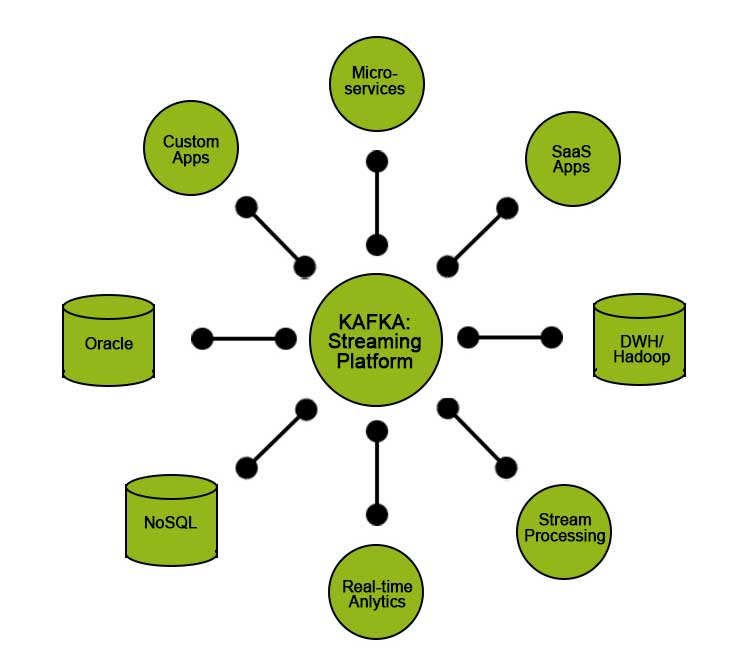
Kafka lays out certain functionalities to its users :
- Publish and subscribe to data.
- Store data in the order they were generated efficiently.
- Real-time / On-the-fly processing of data.
Kafka, most of the time, is used for:
- Implementing on-the-fly streaming data pipelines that reliably get data between two entities in the system.
- Implementing on-the-fly streaming applications that transform or manipulate, or process the streams of data.
Use Cases
Below are some widely implemented use cases of the Kafka application:
1. Messaging
Kafka works better than other traditional messaging systems such as ActiveMQ, RabbitMQ, etc. In comparison, Kafka offers better throughput, built-in partition facility, replication, and fault-tolerance capabilities, making it a better messaging system for large scale processing applications.
2. Website Activity Tracking
User activities (page views, searches, or any actions) can be tracked and fed for real-time monitoring or analysis via Kafka or Kafka to store these kinds of data into Hadoop or data warehouse for later processing or manipulation. Activity tracking generates a huge amount of data that needs to be transferred to the desired location without losing data.
3. Log Aggregation
Log aggregation is a process of collecting/merging physical log files from different servers of an application into a single repository (file server or HDFS) for processing. Kafka offers good performance, lower end-to-end latency when compared to Flume.
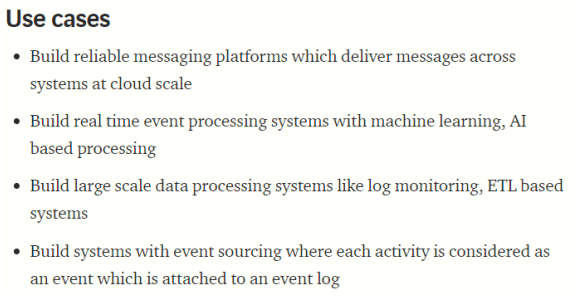
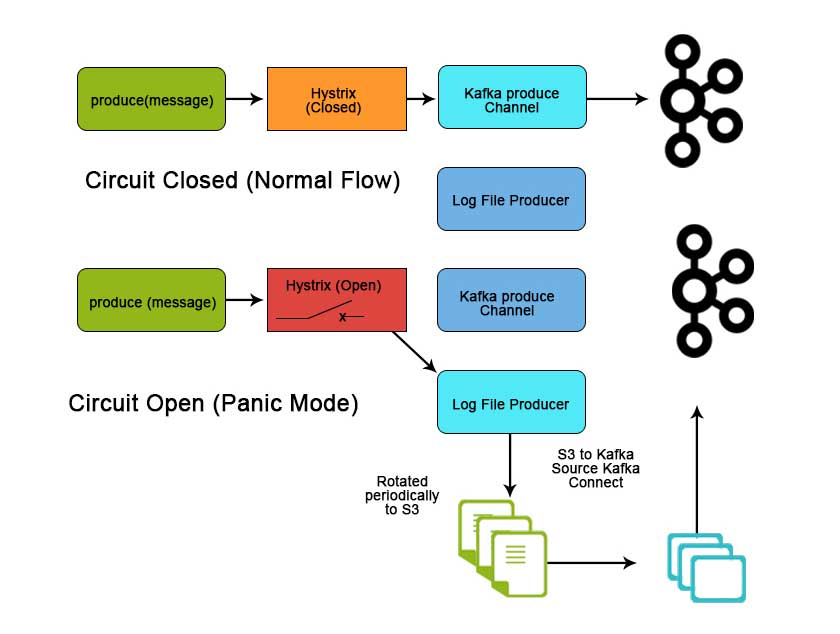
Conclusion
Kafka is used heavily in the big data space to ingest and move large amounts of data very quickly because of its performance characteristics and features that help achieve scalability, reliability, and sustainability. In this article, we discussed Apache Kafka its features, use cases, and application, making it a better tool for streaming data.
Recommended Articles
This is a guide to Kafka Applications. Here we discuss what is Kafka along with the top applications of Kafka, which include widely implemented use cases and some real-life implementation. You may also look at the following articles to learn more-


